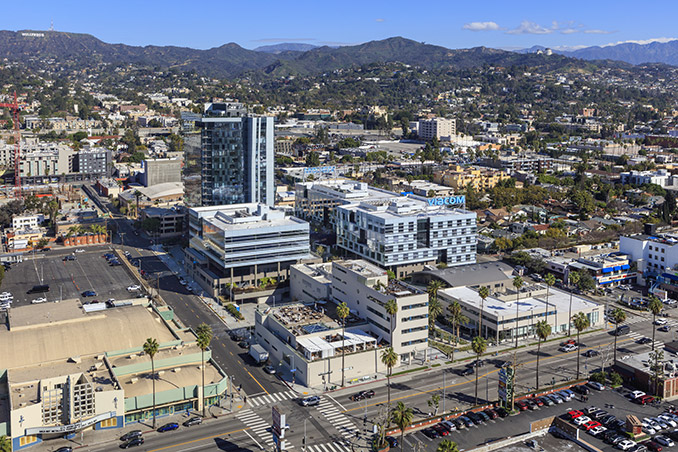
Rios Clementi Hale Studios, House & Robertson Architects, and GBD Architects, designed Columbia Square as a diverse, mixed-use campus of creative offices, residences, restaurants, and retail establishments, tied together by a landscape drawn from the canyons above the site. Columbia Square answers the need to create great places for gathering, working, and enjoying the spectacular outdoor environment of Southern California. The development’s sustainable plan, which is interconnected with its surroundings, embraces the site’s history to guide the way forward for this area of Hollywood. The new Columbia Square reuses studio spaces as well as storefronts, and creates new bungalow offices, all as part of the broader strategy of supporting a collaborative, creative industry campus. The scope of work for Rios Clementi Hale Studios as design architect includes master planning, existing building renovation, new office building and 200-unit residential tower architectural design, landscape architecture, site furniture, and signage.
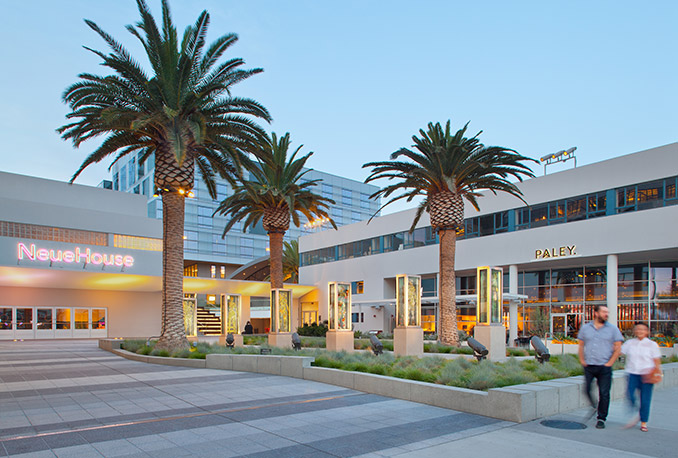
The plan for Columbia Square is easy to access and navigate from all surrounding streets. Ground-level entrances for individual tenants face either out to the surrounding streetscape or inward to the “Courtyards.” The Courtyards organize the spine of the plan and make entries accessible to pedestrians through mid-block connections. As campus buildings rise, they turn their orientations from inward to outward for views of the surrounding Hollywood Hills. Balconies and terraces punctuate the upper floors for additional access to light and air, allowing tenants to have indoor-outdoor connectivity throughout the complex. Different building configurations give variations and options for tenants of any size.
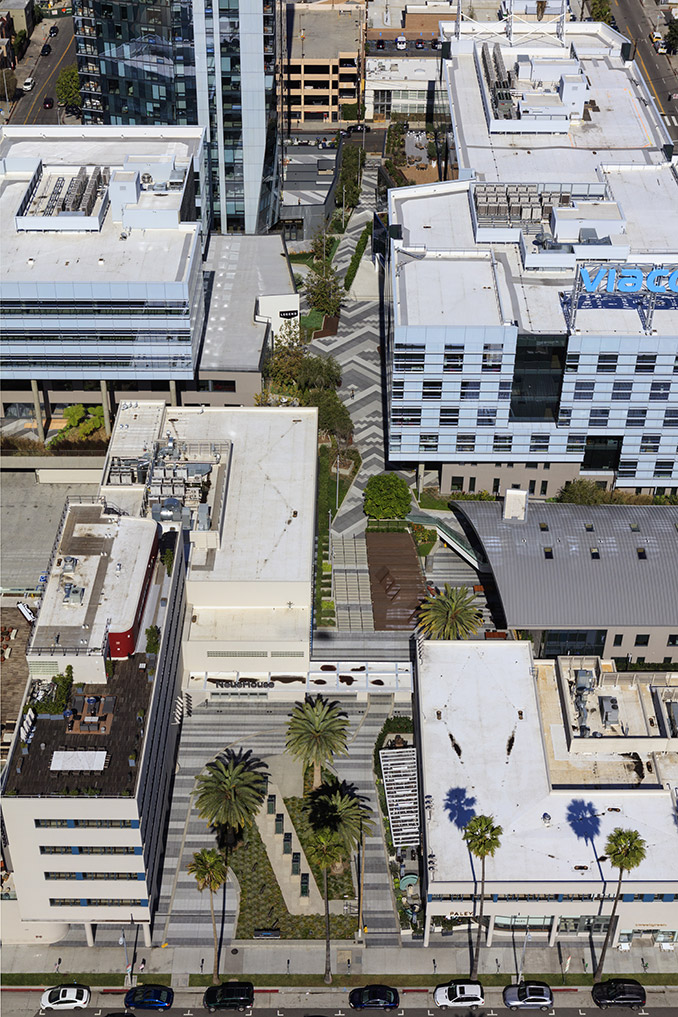
Anchoring the south end facing Sunset Boulevard, Columbia Square’s Sunset Plaza garden, featuring a light tree canopy above and paving that recalls the original courtyard drive, provides a grand point of entry from the streetscape to the campus. Visitors following the path—from this point north toward Selma Avenue—encounter a smoothly transitioning sequence of buildings, vistas, and landscape elements. Several grade-level changes are deftly mitigated through the landscape design and planning, providing fluid access to the parking podium that also climbs the site.
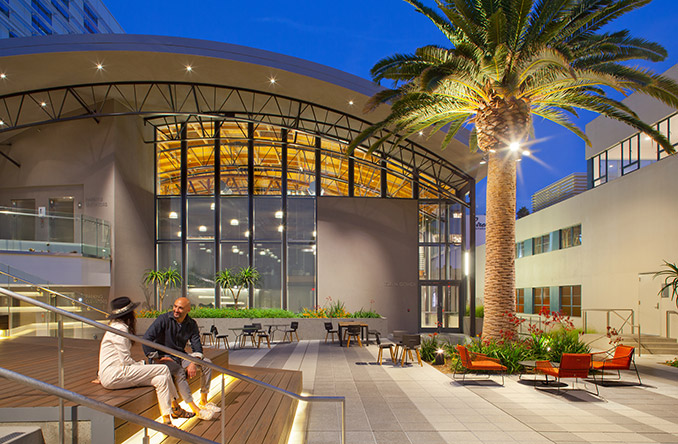
Historic William Lescaze-designed buildings along Sunset Boulevard bookend the garden. The Radio Building/Studio A, a combined five-story 1938 Art Deco building and low-slung former studio, along with the Business Building, a former three-story broadcast studio building, have been renovated for ground-floor retail and restaurant space. Although facing inward to the courtyard, the buildings address the side streets through patterned glass façades of various hues and lines of Goldenrain trees. The smallest of the new structures, Studio BC, a long, two-story, 15,000-square-foot studio/creative office space, showcases the adaptive reuse of the historic Studios B&C’s roof bow-trusses.
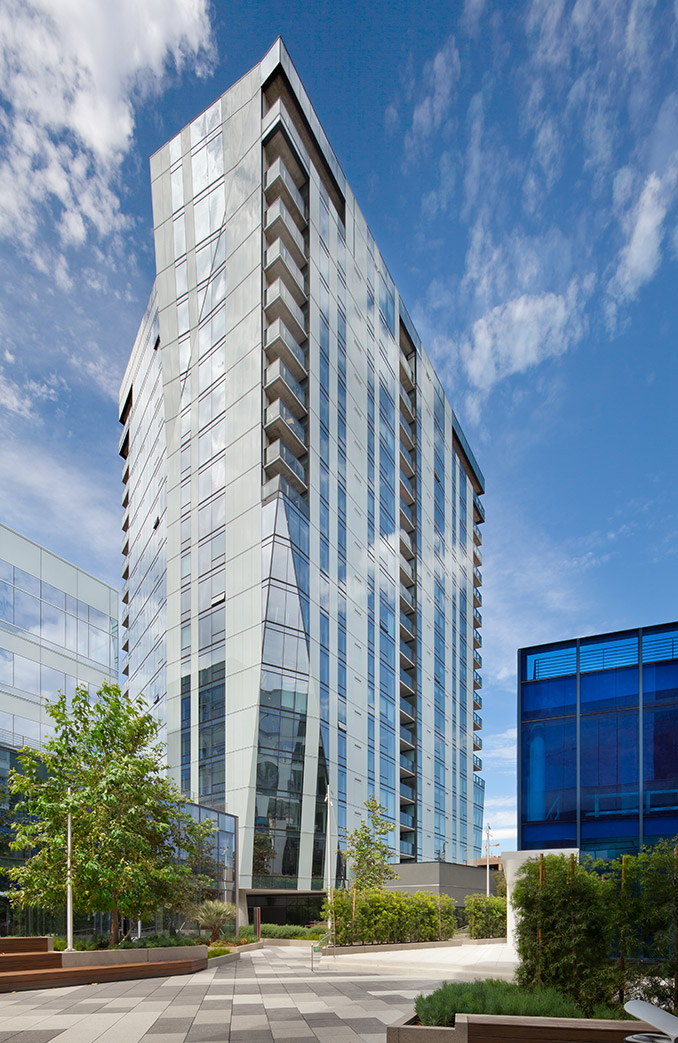
Two six-story creative office structures, El Centro Building and Gower Building, have grand lobbies starting deep in the floor plate and spilling out to the landscaped plazas and paths. Wide bands of windows—a nod to the Lescaze buildings—line volumes lifted up on slender columns to form a design legacy for the new buildings on the rejuvenated block. The new 21-story, 200-unit luxury residential tower, Hollywood Proper Residences, acts as a focal point for the entire campus and neighborhood. The glass-clad, extended-stay property is characterized by its sweeping dramatic architecture, and preserves view corridors from the south to the Hollywood Hills. Common areas and fully-furnished one- and two-bedrooms units are designed by Kelly Wearstler.
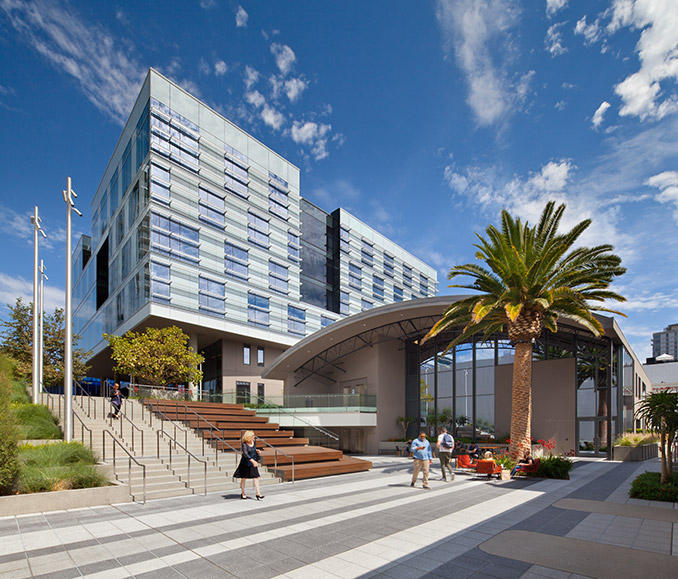
The landscape is envisioned as an accessible and sustainable resource, beautifying the block and providing benefits to the neighborhood. Designed to seamlessly mitigate multiple grade changes, the central path includes broad steps that handle the grade gradually in three flights. Throughout the campus, various types of drought-tolerant trees and plants fill sunny and shaded spots to create a much-needed green resource for the site. Natural features, side tiers for sitting, and inviting tables with high stools encourage lounging, casual collaboration, and individual work. Lush trees and plants native to the southwest frame this spot along the pathway that, like a stream, makes its way through the site. Visible on the horizon to the north is the iconic Hollywood sign. Along the northeast corner of the site, a 5,000- square-foot pocket park is available and open to the City and neighborhood.
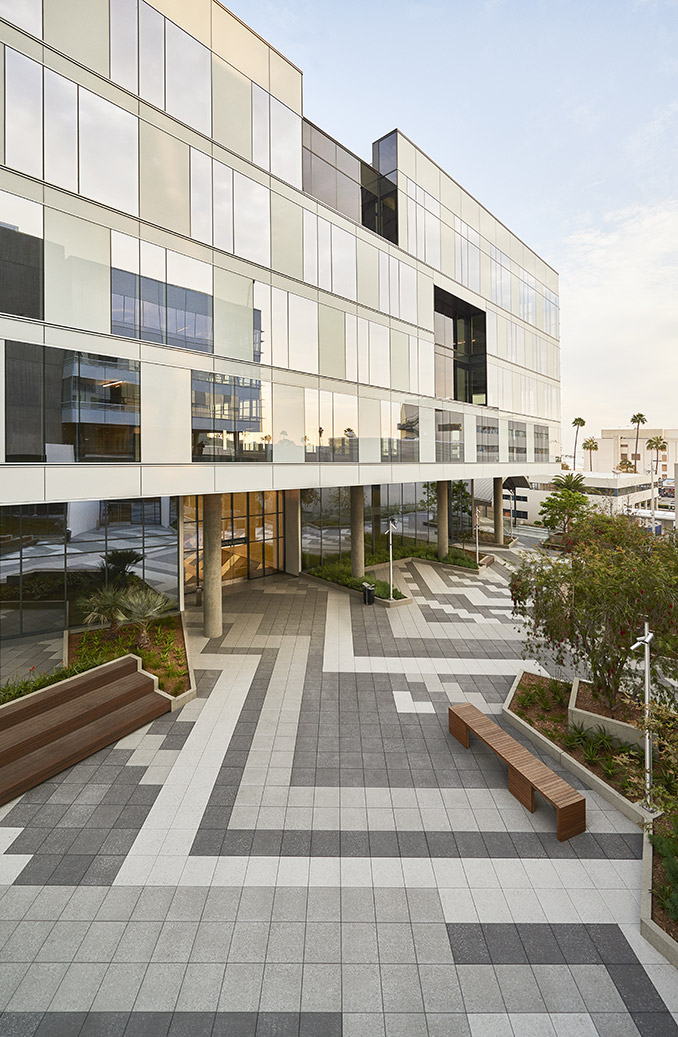
Columbia Square has received LEED Gold certification. A number of varied sustainable tactics have been used, starting with the re-use of the site itself, renovation of existing buildings, and access to nearby public transportation. Additional steps toward sustainability include: highly energy-efficient variable refrigerant air units, solar power rooftops, high-performance glazing, biofiltration planters for storm water runoff, irrigation systems triggered by controllers and sensors, and light-colored paving surfaces.
Owner | Kilroy Realty Corporation
Architecture, Planning, Landscape Architecture, Site Furniture, Signage | Rios Clementi Hale Studios
Executive Architect | House & Robertson Architects
Residential Consulting Architect | GBD Architects
Residential Interior Designer | Kelly Wearstler
Structural Engineer | Englekirk Structural Engineers
MEP Engineer | Stantec Consulting Engineers
Civil Engineer | Tait & Associates
Lighting Design | KGM Architectural Lighting
Historic Consultant | Historic Resources Group
Housing Developer | The Kor Group
Contractor (Office Buildings and Parking) | Hathaway Dinwiddie Construction Company
Contractor (Residential Tower) | WebCor Builders
Photography | Heliphoto.net, Jim Simmons, and Spencer Lowell
